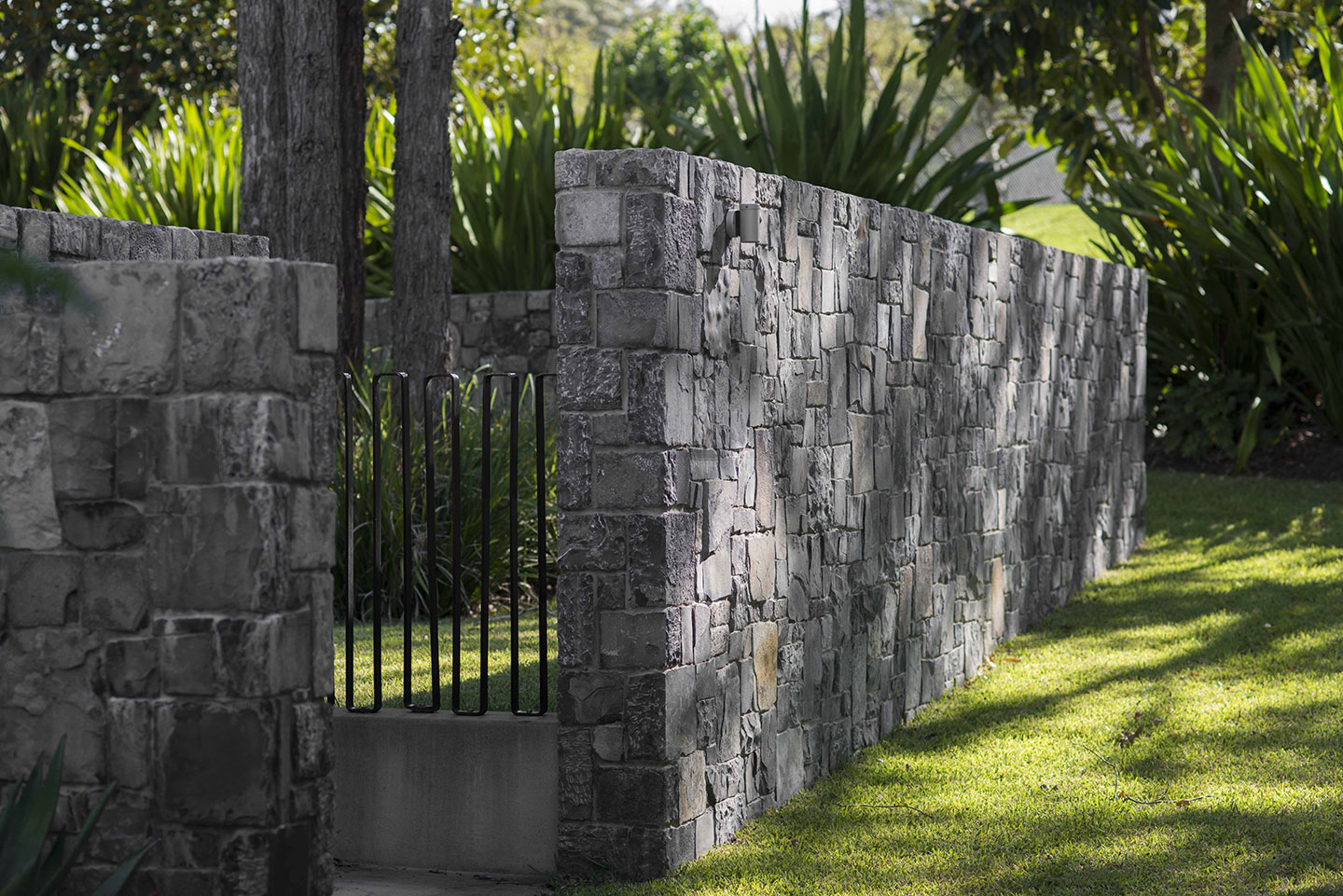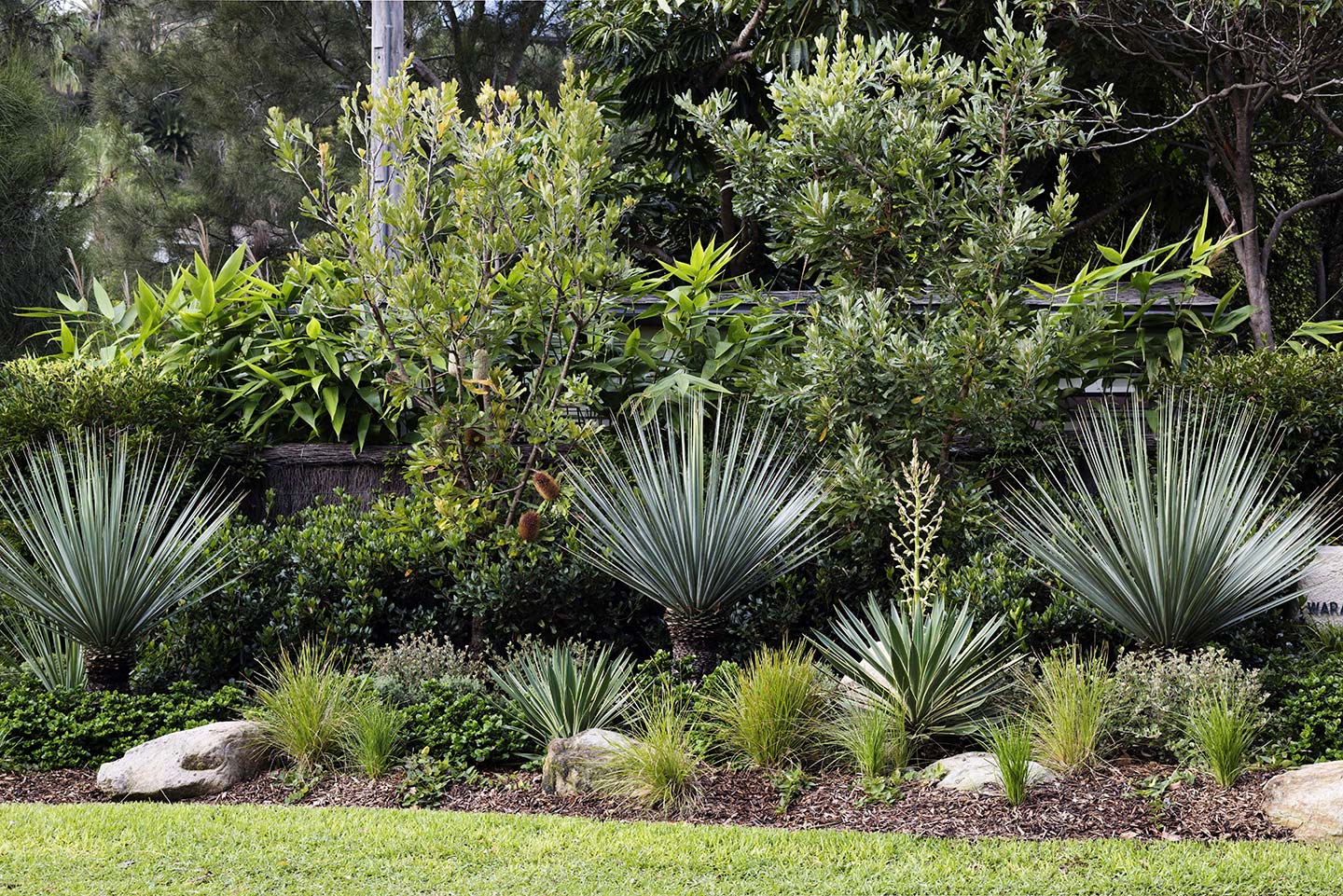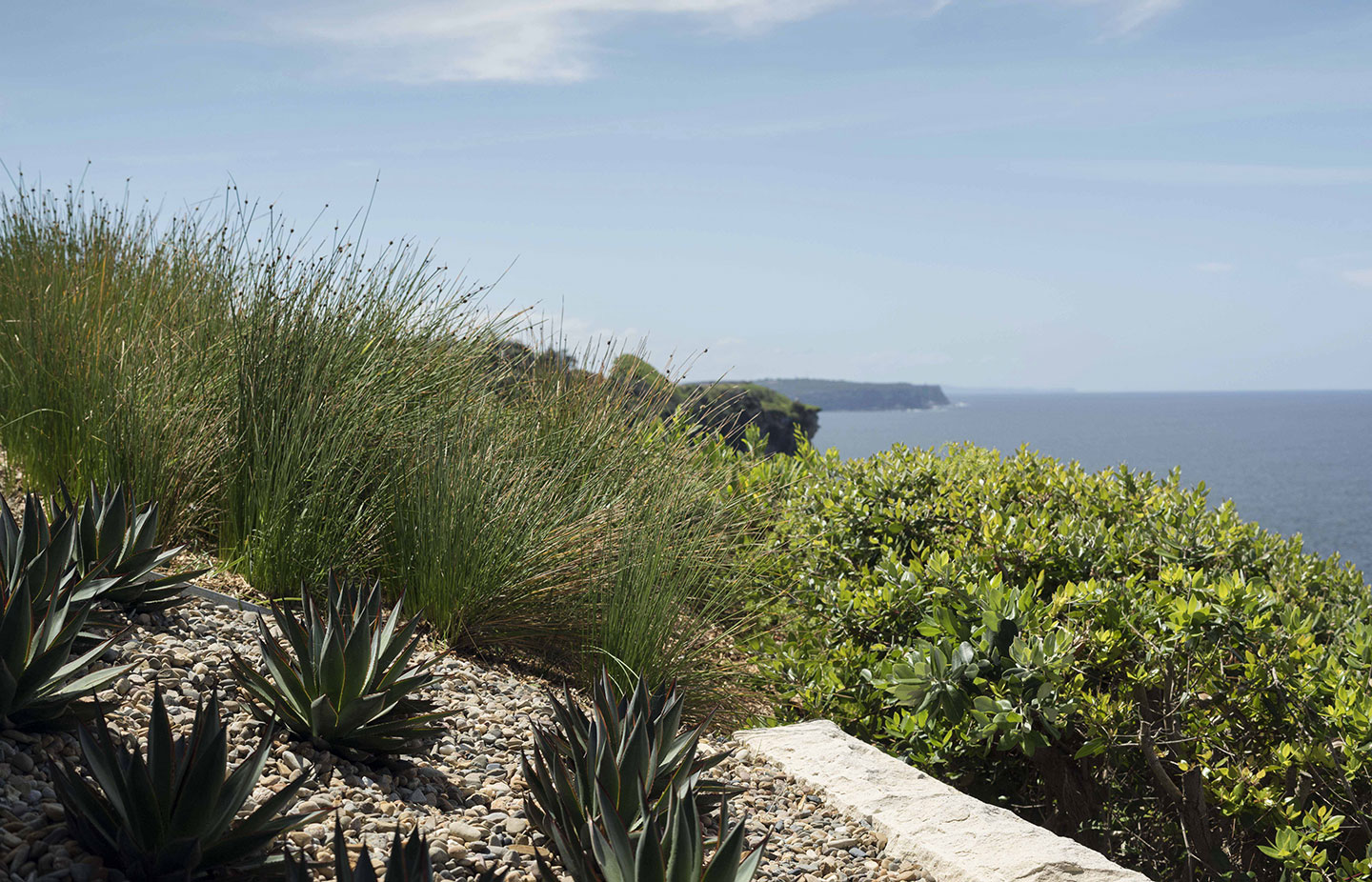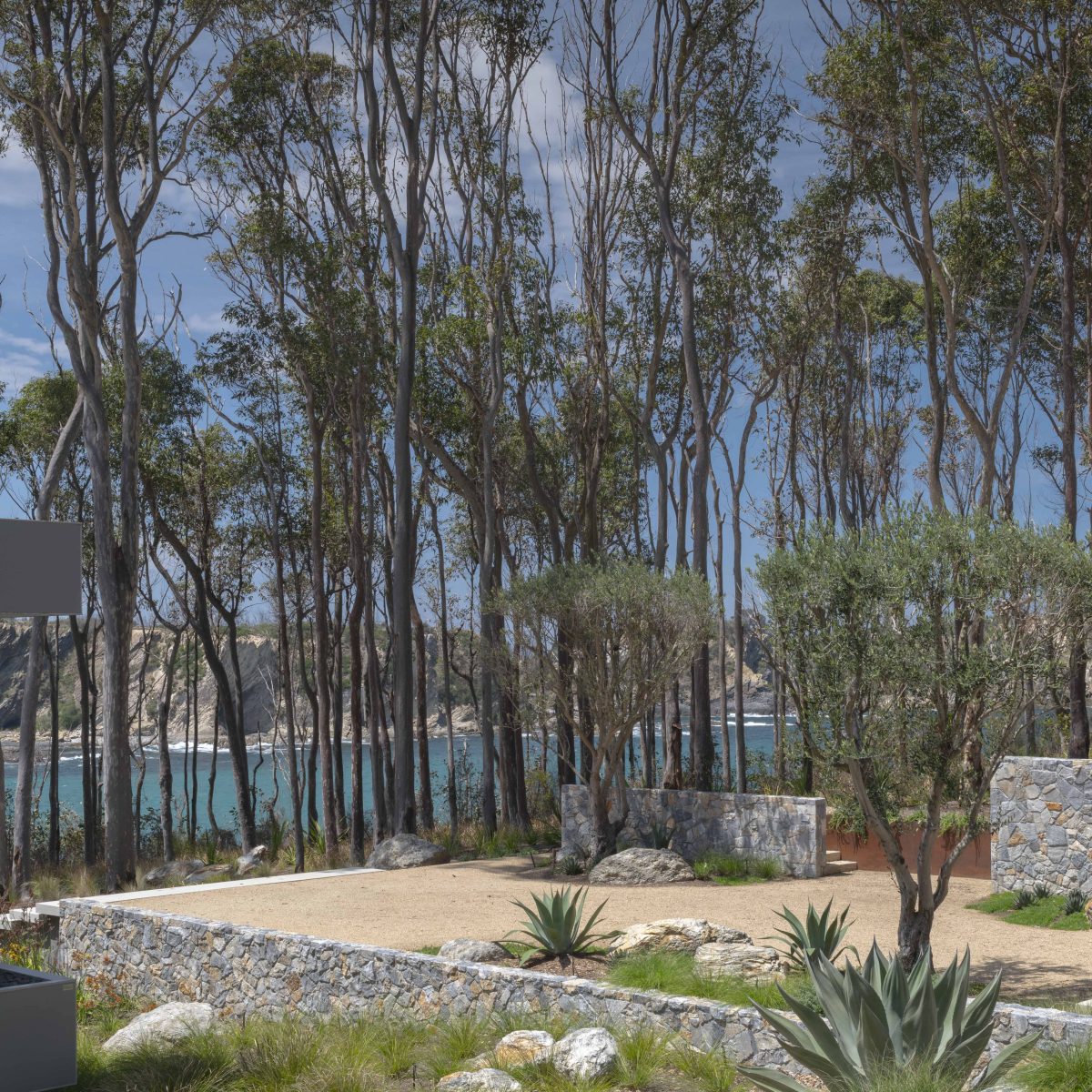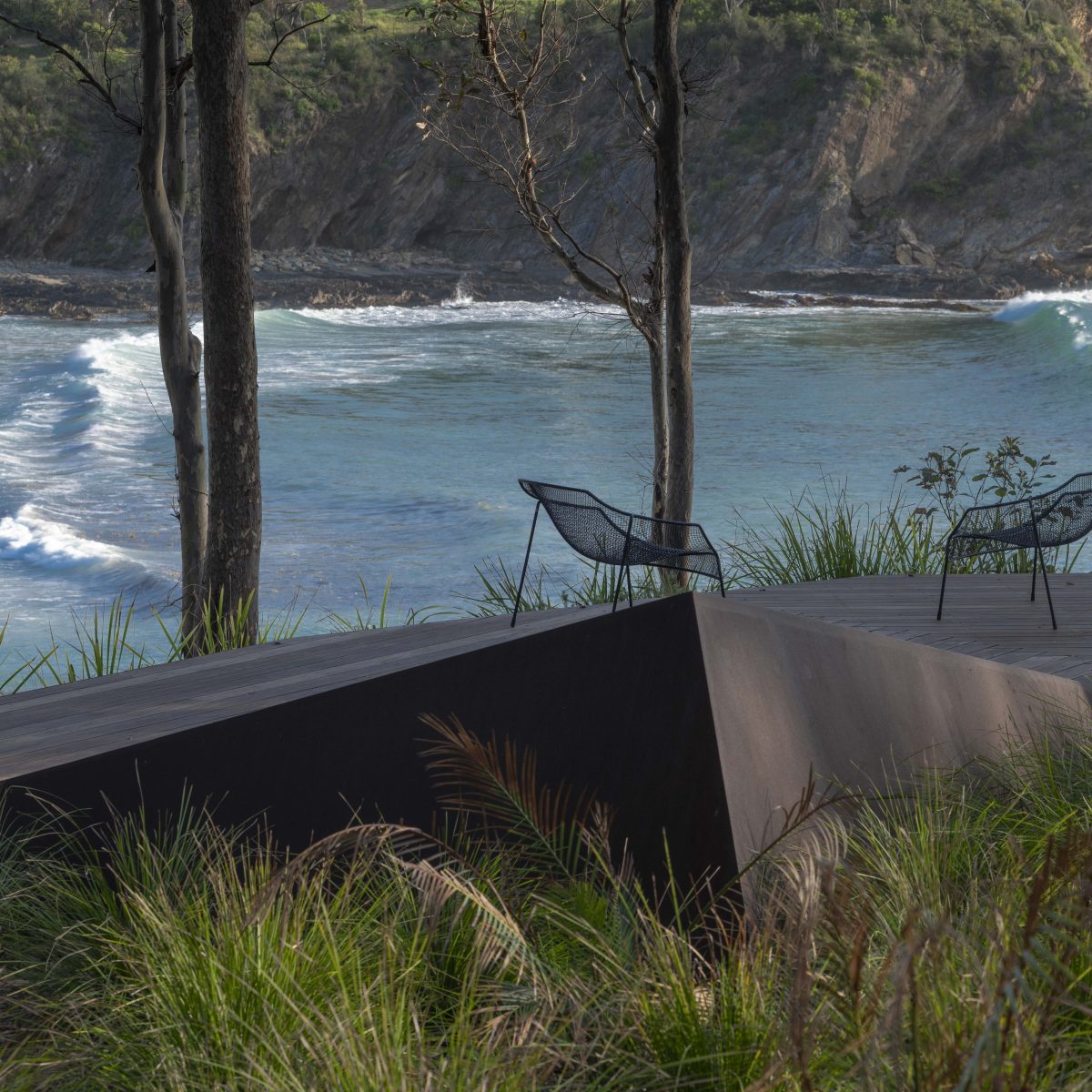What to plant in a windy space
Most of the windy sites we work with in Sydney are on the coast so it makes sense, when planning out the planting, for the first port of call to be plants that naturally grow in these areas – hardy natives such as coastal banksia (Banksia integrifolia), coastal tea tree (Leptospermum laevigatum) and Correa alba. Russian olive (Elaeagnus macrophylla) is a brilliantly hardy exotic, perfect for constructing a dense hedge for privacy or protection from the weather. The common perception of a lot of these hardy plants is that they’re a bit scraggy looking, but in a cleverly planned scheme, they can be incredibly lush. For example, coastal banksia – while often used as a sole standing tree – can be trained into a beautiful flowering hedge, which will attract native birds.
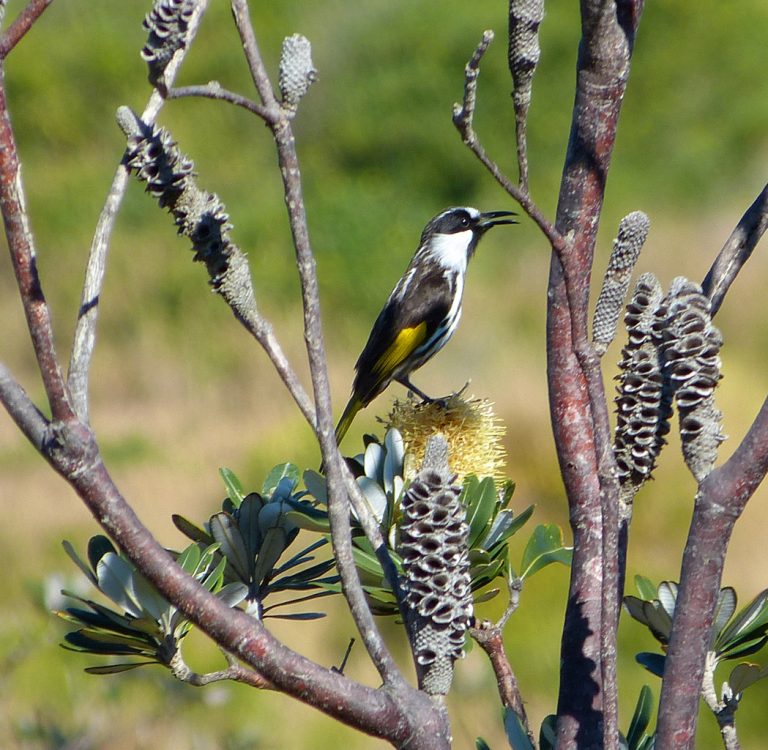
Tips for planting in the wind
Planting in a windy site takes a little more planning and nurturing than in calmer areas – you can’t just bung plants in the ground and hope for the best. The safest strategy is to stake all new plants, from large trees to the smallest shrubs, until they get established – if a plant moves too much when it’s first planted, it can’t take root properly and its growth will be stunted. Look at the direction of the prevailing wind – in Sydney, our most damaging winds are from the south and west, so it’s wise to place stakes on these sides. Smaller plants will benefit from wind breaks, which can be constructed from stakes and shade cloth, until they get established and can survive without them.
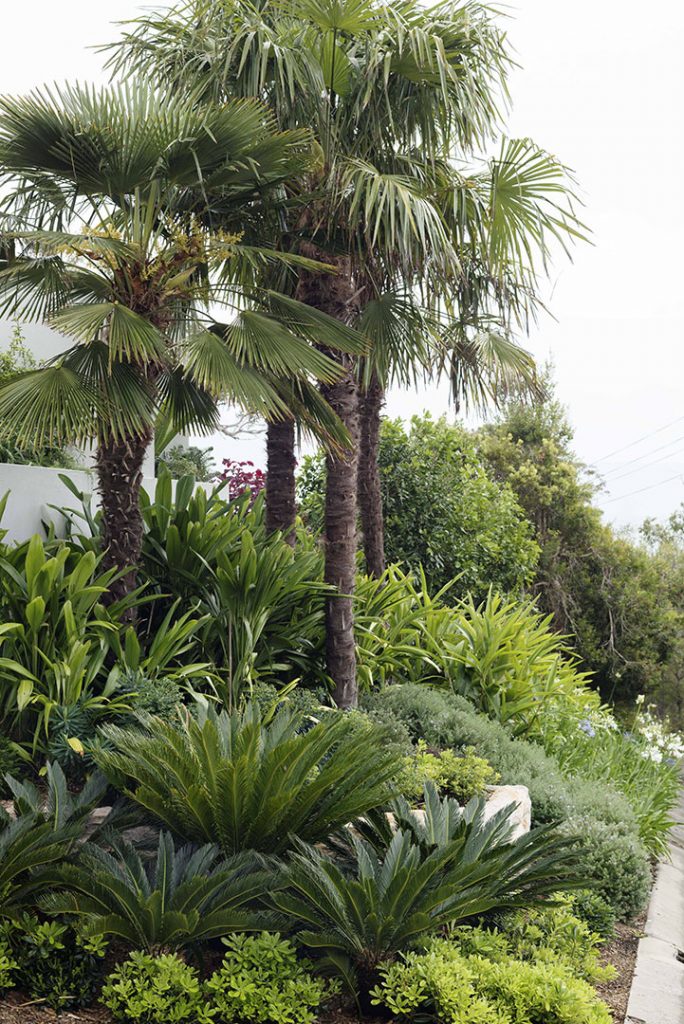
Reducing wind in the garden
Introducing plants that can stand the wind is wise, but ultimately the goal is to reduce the wind in the garden as much as possible. This not only makes the garden more pleasant to be in – no one likes sitting outside in a howling gale – but can also help make the interior of the house more comfortable and reduce heating bills, as brisk breezes are no longer fighting to get in the cracks. Solid fencing is invaluable for blocking wind – veggies or more delicate plants can be planted against a north-facing fence, which will provide protection from the wind while still allowing plenty of sun. While solid fencing does the job admirably, our preference is still for hedging plants, where possible. Exactly how you do this will depend on the quirks of the site – evergreens make fantastic hedges, but if planted on the northern side, may block much-needed winter sun; the taller the hedge, the better it is for blocking wind, but again, you don’t want it to reduce sun in the cooler months.
